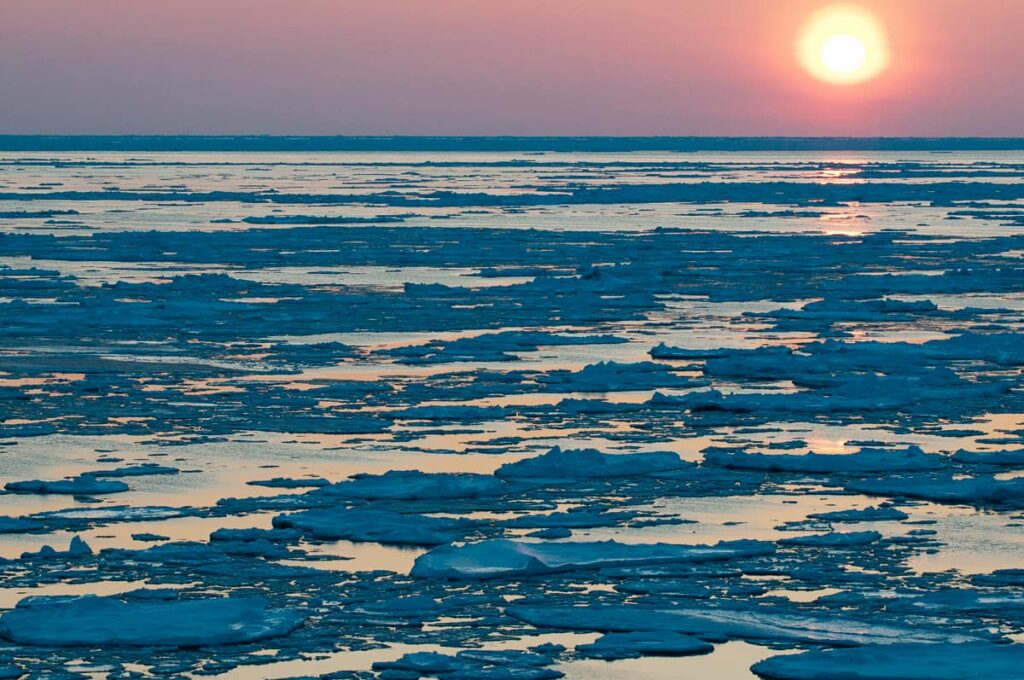
Protecting the Central Arctic Ocean
September is a time for end-of-summer traditions, whether it is a back-to-school ritual or one last camping trip to soak up the last of the summer sun. In the Arctic, the end of summer is marked by a very ordinary event: the sea ice minimum. One day this month, more Arctic sea ice will form than melts. And the annual pattern of increased Arctic sea ice will begin, culminating in ice packs that stretch from the Central Arctic Ocean to the coastal seas along the shores of Russia, Canada, Alaska, Greenland and Norway.
People have lived along the shores of the Arctic Ocean for thousands of years. Arctic residents are very familiar with this pattern of sea ice melting in the warmer season and refreezing in the cold months. In fact, Arctic ecosystems, marine wildlife and people are organized around this annual cycle.
Stay current
Enter your email and never miss an update
What’s quite extraordinary, however, is where this freezing is starting: much nearer to the North Pole than the coasts. That’s because the Central Arctic Ocean—covered in sea ice year-round for much of my lifetime—now features increasing amounts of open water at the end of the Arctic summer.
The Central Arctic Ocean, 1.1 million square miles of international waters surrounding the North Pole, lies at the heart of the Arctic. Yet until sea ice began its unprecedented retreat, it was completely covered in ice year-round. In 2007, even Arctic experts were caught by surprise when they discovered 40% of it was open water in September. The same occurred in 2012. Other years varied widely from low to high.
The precise number for lowest sea ice extent in 2024 will be determined after the fact when all the satellite measurements are in. But looking at daily numbers through today, 2024 won’t be the lowest on record—maybe “just” the sixth lowest. Yet, we can see the bigger picture when we look across multiple years of data. In the last 10 years, for example, an average of 20.5 % of the Central Arctic Ocean was open water in September. This is the highest amount in the satellite record which showed less than 1% as open water in the decades before 1994.
As interesting as they are, these numbers do not adequately describe how radical a shift this represents for the Arctic Ocean and for human interactions with it.
High seas are defined as parts of the ocean beyond 200 nautical miles of coasts. Although most high seas areas are much less studied and understood than coastal seas, the Central Arctic Ocean stands out as one of the least understood marine environments on Earth. As we learn more, we are realizing that it is also one of the most important.
Expeditions have mapped new deepwater corals and seamounts, discovered new species of plankton found nowhere else on Earth, and found much more biological activity beneath the ice in winter than scientists ever expected. Measurements have confirmed that the Central Arctic Ocean is the world’s quietest ocean. And new studies confirm that changes to Arctic sea ice contribute to alteration of the jet stream, leading to more extreme weather events thousands of miles away.

While high seas areas have slowly become subject to some codes of conduct for human behavior, the sudden (on a geological scale) melting of sea ice creates a new risk. Industries and nations interested in the Central Arctic Ocean will arrive ahead of both science and common sense rule-making.
Arctic coastal nations are asserting ownership of more than 95% of the seabed underlying the Central Arctic Ocean—meaning deep-sea mining could occur. And the Central Arctic Ocean has been proposed as a shortcut for industrial goods to connect factories to global markets along a Transpolar Shipping Route. Yet no adequate knowledge or rules are in place for either of these industries to operate safely in such an extreme and globally important place.
When faced with a similar threat to the Central Arctic Ocean from the potential start of commercial fishing, the global community negotiated an international agreement to place a binding moratorium on high-seas fishing in the Central Arctic Ocean. This agreement established a multinational cooperative research program, recognized the special relationship Arctic Indigenous peoples have to the Arctic and ensured their active participation in implementation of the agreement. Coming into force in 2021, the ten signatory countries are now planning joint research using science and Indigenous Knowledge to better understand the Central Arctic Ocean.
As the Arctic days shorten, sea ice is beginning to grow again. But if we want our children to understand this very ordinary cycle in the Arctic, we need to take extraordinary action to protect the Central Arctic Ocean. Learn more about what Ocean Conservancy is doing to protect this global treasure.
Distribution channels: Environment
Legal Disclaimer:
EIN Presswire provides this news content "as is" without warranty of any kind. We do not accept any responsibility or liability for the accuracy, content, images, videos, licenses, completeness, legality, or reliability of the information contained in this article. If you have any complaints or copyright issues related to this article, kindly contact the author above.
Submit your press release